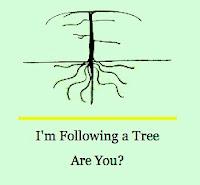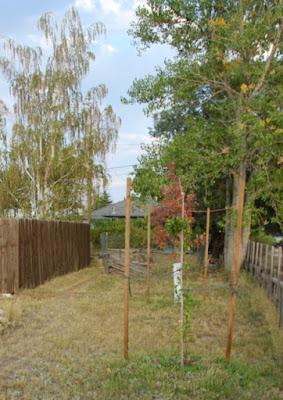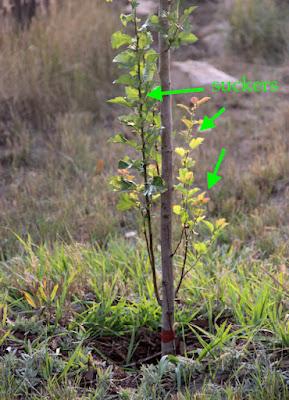In the foreground is skinny Spike, the hawthorn. Behind is Flash, the maple (red canopy).
Since my last report, there has been only a little change in the trees I'm following. Flash's canopy has become even more red, though we've had nothing close to a frost. Spike is still a skinny odd-looking "tree".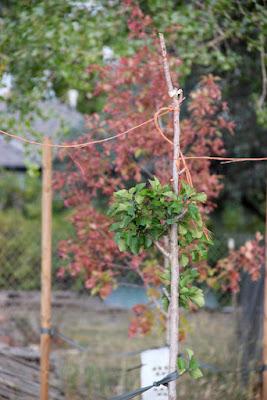
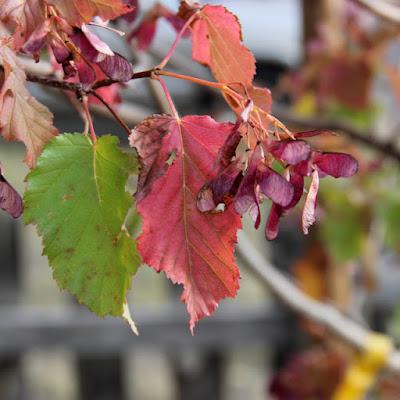
Flash has only a few green leaves. The foliage is pretty ragged all in all.
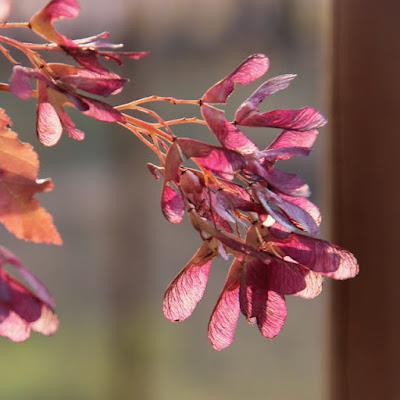
When backlit, the aging samaras (keys) are still beautiful.
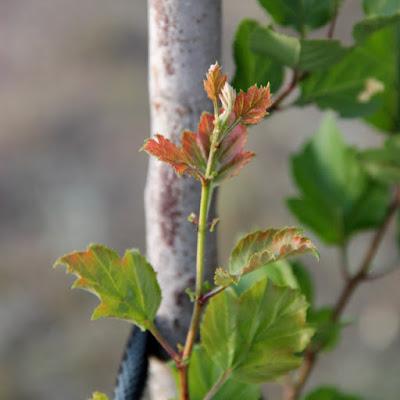
For Spike, it is the young leaves that are reddish. The rest are still green.
Now, for botany nerds ...

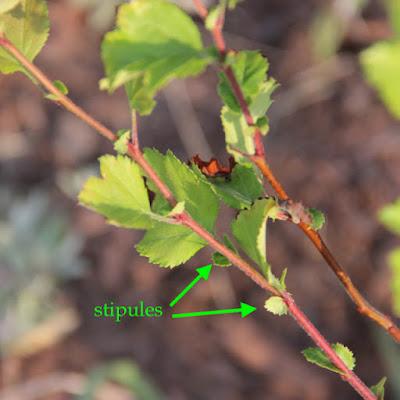
Stipule: "an outgrowth typically borne on both sides (sometimes on just one side) of the base of a leafstalk (the petiole). Stipules are considered part of the anatomy of the leaf ..."
If you like order, stipule classification is for you! There are types based on many different characteristics, such as duration, shape, size, position, modification, and more. I preferred the summary of function: "Stipules have various functions. Some stipules are not well understood or may be vestigial." This is the way I feel about many things these days.
This hawthorn has foliaceous stipules, i.e., similar to leaves. Being green, perhaps they contribute to photosynthesis—the business of making energy for the tree. I would guess Spike could use the help, having recently recovered from near death. And maybe this is why stipules are more prominent on the suckers (the next topic).
Enlarge to see stipules at base of leaves.
Suckers seem to be universally despised, according to Google. For example, "young stems sprouting from the base or from a spot on the trunk ... are called suckers, because they zap water and nutrients from the main tree. As suckers are unhealthy for trees and they are unsightly, it’s important to know how to eliminate them ..." More here.The Wikipedia article about Plant Development is more open-minded (see Adventitious structures; Buds and shoots). "Adventitious buds [buds that develop in unusual locations on the plant] are often formed after the stem is wounded or pruned. The adventitious buds help to replace lost branches." I agree! Adventitious shoots are very helpful in this situation.
